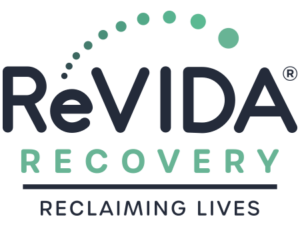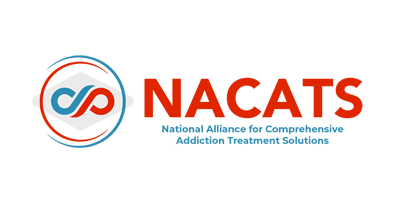
In 2022, 1455 people in Knox County, Tennessee, visited the emergency room for a nonfatal opioid overdose. It is possible to overdose on any opioid, however, the stronger the substance is, the greater the risk becomes.
At ReVIDA® Recovery, we provide lifesaving medication-assisted treatment (MAT) to people in Appalachia living with opioid use disorder (OUD). We also want our website to serve as a free opioid education resource for people in our community. That’s why today, we are going into detail on three of the strongest opioids: fentanyl, heroin, and morphine.
Table of Contents
Understanding What Opioids Are and What They Do
Opioids are either derived from or mimic the substances that are derived from the opioid poppy, which has a long history of being used for its relaxing and pain-relieving effects.
They work by attaching themselves to the opioid receptors throughout your brain, spine, and stomach. Your body naturally produces certain opioids, like endorphins, which normally attach to your opioid receptors and help to naturally relieve pain. When you take an opioid, it floods your system with endorphins and other feel-good chemicals. Your body quickly begins to build a tolerance, meaning you need more opioids to get the same effect. This also means that the natural opioids your body produces no longer feel like enough, which makes it difficult to stop taking them. It’s this process that leads to the cycle of OUD.
Some opioids have much more intense effects than others, and people with OUD will seek out stronger opioids over time. If this has happened to you or someone you know, it’s important to understand just how strong different opioids are. Let’s review three of the strongest, most common opioids.
Fentanyl: The Extreme
Fentanyl is widely regarded as the strongest opioid. It is as much as 100 times more potent than morphine and 50 times more potent than heroin, which are already two powerful opioids themselves. This makes fentanyl extremely dangerous, even in small doses. Like other opioids, fentanyl is usually smoked, snorted, or ingested. Although it’s commonly said that you can feel the effects of fentanyl just from touching it, you would have to touch it for several hours or even days for it to penetrate the dermis.
The substance is a synthetic opioid, which means that it is produced in a lab and doesn’t occur naturally. It was first produced in 1959 as a tool for pain management, and it still has medical uses today. It is prescribed as an analgesic in severe pain cases and is dosed in safe, controlled environments.
Most of the fentanyl sold on the street is produced illegally. This means that it is difficult to know exactly what ingredients are in any individual dose of fentanyl, and it’s difficult to know exactly how potent it is.
Typically, illicitly produced fentanyl is sold as a white powder. It is also commonly sold as a small round pill. It is difficult to distinguish between fentanyl and other opioids, like heroin, without chemical testing.
Fentanyl is also a common lacing agent. In other words, the people who sell illegal substances will put fentanyl in their product to either enhance the high or make it cheaper to produce. When someone takes a substance laced with fentanyl, they’re at a higher risk of overdose, especially if they don’t have a tolerance to opioids.
Heroin: Highly Potent
Heroin is another potent illegal opioid. Although it’s not as powerful as fentanyl, that doesn’t make it less dangerous. Like fentanyl, it’s difficult to know the exact potency of heroin as the strength differs depending on the specific type of heroin produced and the chemicals used in the process.
Heroin is a semi-synthetic opioid that’s derived from the morphine found in opium poppies. Once the morphine is extracted from the poppy, it is combined with chemicals in a laboratory setting. It was first produced in 1874 by a man named Alder Wright. Doctors soon began using heroin to treat morphine use disorder in American Civil War veterans and other people who had become addicted to the substance due to treatment or recreation. However, it quickly became obvious that heroin was even stronger than morphine.
Usually, heroin is sold in a white to off-white powder form and is then snorted or smoked. Many people mix heroin with water to turn it into a liquid that they can inject. There are other forms of heroin, like black tar heroin, which is cheaper to make but also less pure. Black tar heroin is usually a black, sticky substance and is typically smoked as a vapor. While it can be turned into a liquid, this is less common because the substance is not as water-soluble as powder heroin is.
Heroin is often cut with other substances to make it less expensive. Ingredients like baby powder or even rat poison can make the product cheaper to produce, and it’s impossible to identify with the naked eye. Heroin can also be laced with fentanyl, which makes it even more potent. Because heroin has no medical relevance, there are no specific dosing or lacing guidelines, furthering its potential for negative side effects.
Morphine: The Original
Morphine is one of the oldest and strongest forms of opioids. As stated above, it’s a naturally occurring opioid that is extracted from opium poppies. The poppies have been used for thousands of years to treat pain and other maladies, as well as for recreational purposes. Morphine and other naturally occurring opioids in the flower, like codeine, are the alkaloids that cause their desired effects.
A French pharmacist named Friedrich Sertürner first isolated morphine in 1803 and found it to be a much more effective pain reliever on its own than the opium plant itself. He named it morphine after the Greek god of dreams, Morpheus, because of its sedative effects.
Today, morphine is still used to treat intense pain caused by surgery or serious conditions like cancer. It’s also used in an extended-release formula to treat chronic pain. Morphine commonly comes in pills for daily use and is administered intravenously in hospitals across the country. Since it’s a natural opioid, it’s also possible to extract morphine directly from the plant. However, it’s usually altered into a more potent opioid, like heroin.

Recognizing an Opioid Overdose
Every opioid comes with the risk of overdose, regardless of its potency. An overdose happens any time you take more opioids than your body can handle. Everyone’s tolerance levels are different, and taking the same amount as someone else can affect you much more intensely if your levels are low.
Opioid overdoses have some distinct symptoms compared to other substances. The “death rattle,” which is the sound of choking or snore-like gurgling coming from the person’s mouth and chest, is one of the most common signs of an opioid overdose. During the death rattle, breathing is shallow and erratic, and sometimes, breathing has already stopped. Other signs of opioid overdose include:
- Bluish tint to the lips and fingertips on lighter-skinned people, gray or ash tint on darker-skinned people
- Low body temperature
- Confusion
- Loss of consciousness
- Small, pinpoint pupils
- Slow heart rate
- Excessive sweating
If you or someone you know has experienced an opioid overdose, it’s important to get medical attention as quickly as possible. Do not worry about legalities – be honest with all substances taken. Tennessee’s Good Samaritan Law protects you from being charged for taking or possessing opioids if you’re helping someone who’s having an overdose.
When an overdose goes untreated, the effects can be fatal. Thankfully, an opioid overdose can be reversed using Narcan® (naloxone), which is available over-the-counter.

Getting Help for Opioid Addiction in Appalachia
Some opioids are stronger than others, and you don’t have to take the strongest opioids out there to end up with OUD. Regardless of what opioids you’ve consumed, the right opioid MAT clinic will empower you to find a lifetime of recovery. With a combination of medication, therapy, and other support, you can leave opioids in the past and find a healthier path forward through life.
If you or someone you love is taking different types of opioids, help is available today. ReVIDA® Recovery offers flexible therapy options in combination with Suboxone or Sublocade treatment. We have seen firsthand the difference MAT makes for people in recovery and are proud to provide the residents of Tennessee and Virginia with a judgment-free space dedicated to healing. Once you are established in our program, we offer telehealth treatment options to ease access to your care. Call us today at 423-631-0432 to learn more about our program offerings.
Reclaim your life.









